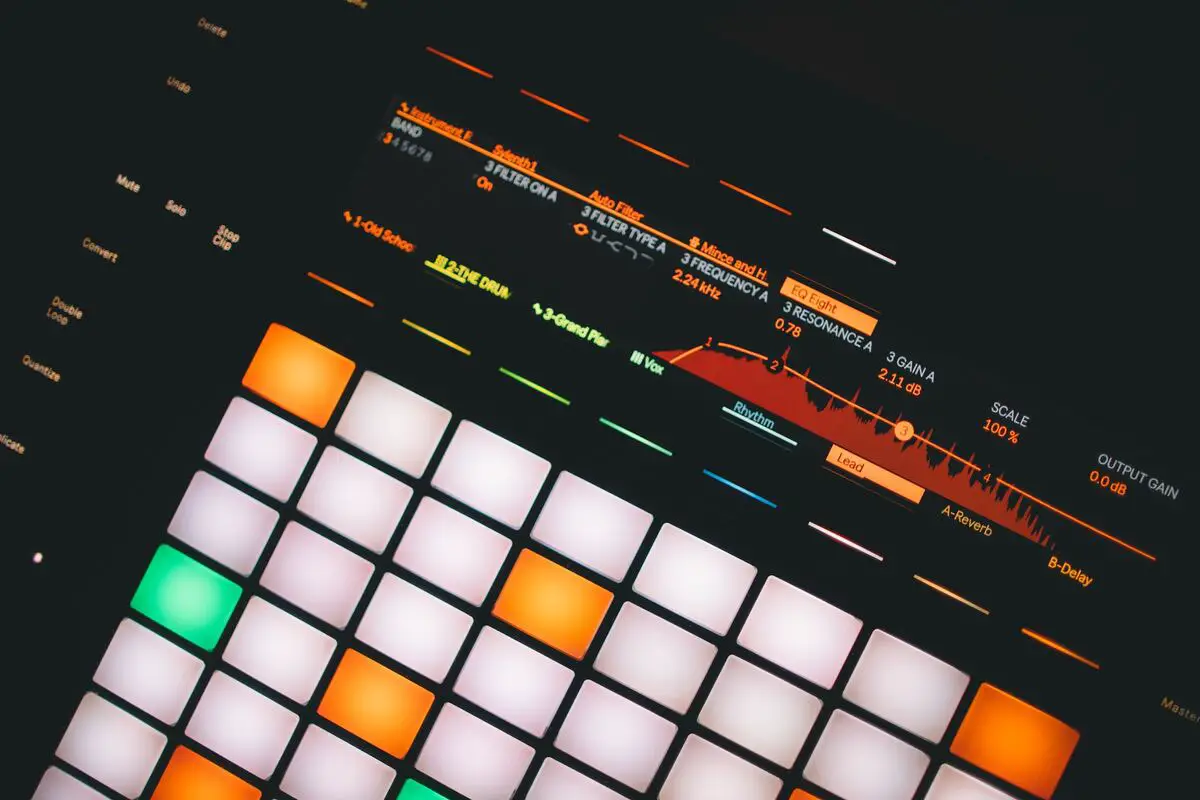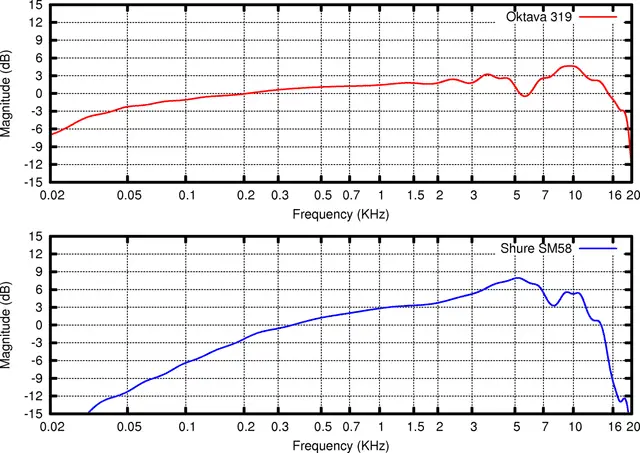Think about the different sounds you hear every day: the low buzz of a car engine, the high pitch of a bird chirping, or your favorite song on the radio. What makes these sounds different? Well, the answer lies in frequency. Frequency is what makes a sound high (like a whistle) or low (like a drum). So how do musical frequencies shape the sounds that captivate our ears and move our souls? Let’s find out.
What is frequency in audio? Frequency is the measure of vibration or oscillation, determining how quickly an object or signal moves back and forth. In music, it’s the fundamental building block that creates the diverse range of melodies and harmonies we adore.
What is audio frequency?
When you pluck a guitar string or hit a drumhead, you set off a chain reaction of vibrations. These vibrations travel through the air as sound waves, eventually reaching our ears. It’s these sound vibrations, or musical frequencies, that our ears interpret as music.

Audio frequency is the rate at which a sound wave or audio wave vibrates per second. It’s a key concept that determines how we perceive the pitch of a sound. Frequency is measured in units called hertz (Hz). A sound wave with a high frequency (many waves per second) will be perceived as a high-pitched sound, such as a whistle or a bird chirping.
For example, a sound at 20,000 Hz (the upper limit of human hearing) would be a very high pitch. Conversely, a sound wave with a low frequency (few waves per second) will be perceived as a low-pitched sound, like a bass drum or the rumble of thunder. A sound at 20 Hz (the lower limit of human hearing) would be a very low pitch.
AKAI Professional MPK Mini MK3

AKAI Professional MPK Mini MK3
How do octaves and harmonics affect frequencies?
An octave is a musical interval that spans from one note to another, either higher or lower while maintaining a harmonic relationship. Here’s the fascinating part: When you double the frequency of a particular note, you ascend one octave. Similarly, when you halve the frequency, you descend one octave.

Now, let’s talk about harmonics. They play a crucial role in creating rich and complex musical tones. Harmonics are additional frequencies that accompany the fundamental frequency of a vibrating object, such as a guitar string or drumhead. These harmonics occur at perfect multiples of the fundamental frequency, resulting in a harmonious and pleasing sound.
It’s the combination of these harmonics that gives instruments their unique timbre and character. When you double the frequency of a note to move up one octave, the harmonics also shift accordingly. These harmonics maintain their perfect relationship to the fundamental frequency, creating a harmonic series that contributes to the unique characteristics of the sound.
What is an audio frequency spectrum?
Did you know that we can visualize the frequencies generated by different instruments using a frequency spectrum? Picture a graph that displays various frequency ranges, from bass to midrange to treble. This spectrum allows us to identify which instruments contribute most to different frequency areas. For example, bass guitars and kick drums dominate the lower frequencies, while cymbals and high-pitched instruments shine in the treble range.
Understanding musical frequencies is not just fascinating—it’s also essential for musicians and audio engineers.
Understanding musical frequencies is not just fascinating—it’s also essential for musicians and audio engineers. By training your ears to discern different frequencies, you’ll develop a keen sense of tonal balance when recording, mixing, or producing music.
What determines the frequency of a musical instrument?
Each musical instrument has its own unique set of characteristics that determine the frequencies it can produce. For example, the length, tension, and thickness of a guitar string influence the frequency it vibrates when played. Similarly, a drumhead’s tension and size determine its specific frequency range. By manipulating these factors, musicians can create different pitches and tones.
What is the frequency of most music?
Music is a complex interplay of thousands of frequencies occurring simultaneously. When you combine different instruments, each with its own set of harmonics and frequencies, you create an intricate tapestry of sound. Skilled musicians and producers harness this complexity, organizing and controlling the frequencies to deliver a rich and captivating sonic experience.
When we analyze the frequency content of music, we find that different instruments and elements occupy specific frequency ranges. Let’s break it down:
- Bass Frequencies (20-200 Hz): Instruments like bass guitars and kick drums produce powerful low-end frequencies. These frequencies provide the foundation and impact of music, giving it depth and groove.
- Midrange Frequencies (200-4,000 Hz): The heart and soul of many instruments reside in this range. Guitars, pianos, vocals, and various melodic instruments occupy the midrange, contributing warmth and clarity to the overall sound.
- Treble Frequencies (4,000-20,000 Hz): Cymbals, high-pitched percussion, and other instruments shine in the treble range. These frequencies add sparkle, brightness, and airiness to the music.
Frequency ranges of various instruments
The table below showcases the frequency ranges of different musical instruments commonly used in music production and recording. These frequency ranges provide insights into the tonal characteristics and sonic capabilities of each instrument.
| Instrument | Frequency Range (Hz) |
|---|---|
| Bass Guitar | 41 – 246 |
| Kick Drum | 30 – 100 |
| Electric Guitar | 82 – 1,197 |
| Piano | 27.5 – 4,186 |
| Vocals | 80 – 1,200 |
| Cymbals | 1,000 – 15,000 |
If you want even more great tips and information, check out the video below.
Hey there, audio enthusiasts and curious learners! Welcome to another blog post where we’ll dive into the intriguing world of audio frequency range. Understanding and managing the audio frequency range in music is important for audio engineers, musicians, and producers to ensure a balanced and pleasing listening experience for the audience.
In this post, we’ll explore the ins and outs of frequency in audio, uncover the importance of understanding audio frequency range, discover the factors that affect it, and learn how to interpret those pesky audio specifications. Get ready to level up your audio game and impress your friends with your newfound knowledge. Let’s begin!
What is the audio frequency range? The audio frequency range refers to the range of frequencies that are audible to the human ear and are typically used in musical compositions. The standard frequency range for human hearing is generally considered to be between 20 Hz to 20,000 Hz, although it may vary slightly depending on an individual’s age, hearing ability, and other factors.
What are the different audio frequency bands?
The audio frequency bands are typically categorized into several ranges, each with its own characteristics and applications. Here’s a table that provides an overview of different audio frequency bands and their corresponding frequencies:
| Frequency Band | Frequency Range (Hz) | Common Applications |
|---|---|---|
| Sub-bass | 20 – 60 | Deep bass in recordings |
| Bass | 60 – 250 | Low-end impact in music and sound |
| Lower midrange | 250 – 500 | Body and warmth in sound |
| Midrange | 500 – 2k | Clarity and intelligibility of speech and instruments |
| Higher midrange | 2k – 4k | Presence and definition in vocals and instruments |
| Presence | 4k – 6k | Brightness and articulation in sound |
| Brilliance | 6k – 20k | High-end sparkle and detail in music and sound |
Please note that these frequency ranges are approximate and can vary depending on specific audio applications, equipment, and personal preferences.
1. Sub-bass
This range includes frequencies below 60 Hz and is often associated with deep bass elements like subwoofers and synthesizers. Sub-bass frequencies are felt more than heard and can create a sense of power and impact in music.
2. Bass
The bass range encompasses frequencies from 60 Hz to 250 Hz and is important for defining the low-end presence of instruments like bass guitars, kick drums, and low-end vocals. Proper management of bass frequencies is crucial for achieving a balanced and punchy mix.
3. Lower midrange
This frequency band is generally defined as ranging from 250 Hz to 500 Hz, and it is often associated with the body and warmth of sound in music and vocals.
4. Midrange
The midrange frequency band is typically from 500 Hz to 2 kHz, and it is considered critical for the clarity and intelligibility of speech and musical instruments.
5. Higher midrange
This frequency band usually spans from 2 kHz to 4 kHz, and it is often associated with presence, definition, and detail in vocals and instruments.
6. Presence
The presence frequency band typically ranges from 4 kHz to 6 kHz and is known for adding brightness, airiness, and articulation to sound.
7. Brilliance
This frequency band is often defined as ranging from 6 kHz to 20 kHz, and it is associated with high-end sparkle, detail, and shimmer in music and sound.
What is a frequency response chart?
A frequency response chart is a graphical representation of the behavior of a system or device, such as a microphone or speaker, in response to different frequencies of an input signal. It is generated by testing the device in a controlled environment, such as an anechoic chamber, where the room is acoustically dead and devoid of any sound reflection.

The chart typically consists of a graph with frequency values plotted on the horizontal (x) axis and magnitude or impedance values plotted on the vertical (y) axis. The magnitude and phase response of the system or device is usually represented in decibels (dB) and degrees, respectively.
The frequency response chart may also show the impedance curve of the device, which represents the impedance values of the system or device at different frequencies. The impedance curve is usually plotted on a logarithmic scale on the right side of the chart. It provides information about how the system or device reacts to the input signal in terms of its electrical impedance characteristics.
Interpreting a frequency response chart is important for understanding the performance of an audio system or device.
Different devices may have a flat response, where they reproduce all frequencies equally, or a shaped response, where they emphasize or attenuate certain frequencies to achieve a specific sound signature. Interpreting a frequency response chart is important for understanding the performance of an audio system or device. It can help in choosing the right equipment for specific applications, such as recording, broadcasting, or live sound, based on the desired tonal characteristics or sound signature.
Audio frequency range and enclosure design
The audio frequency range and enclosure design are two critical factors that greatly impact the performance and sound quality of an audio system. The impact of audio range on enclosure design can be significant and is related to various factors that affect the performance of the audio system.
1. Size of the speaker
One way in which audio range can impact enclosure design is through the size of the speaker. Smaller-sized speakers are capable of moving faster compared to larger speakers, which allows them to reproduce higher frequencies with fewer unwanted harmonics. This means that the size of the speaker can influence the overall dimensions and design of the enclosure, as smaller speakers may require different enclosure sizes and configurations compared to larger speakers to optimize their performance.
2. Enclosed volume
Another factor to consider in enclosure design is the damping of sound waves. Lower frequency sound waves are harder to dampen compared to higher frequency sound waves and thus may require different materials or designs to effectively absorb or dampen the sound waves. The choice of enclosure materials, such as the density and thickness of the damping material, can impact the performance and efficiency of the audio system, especially at lower frequency ranges.
3. Vent design
The design of speaker vents or ports can also be affected by the audio range. Vent designs can have an impact on the performance of the speaker and the overall sound quality of the audio system. For example, different vent designs can affect the turbulence and fluid motion within the enclosure, which in turn can affect the performance of the speaker and the resulting sound output. The design of vents or ports may need to be optimized based on the specific audio range requirements of the system.
3. Material selection
The material used in the construction of the enclosure can impact the absorption or damping of sound, especially at lower frequencies. Lower frequency sounds are harder to dampen, so choosing the right material for the enclosure is important to effectively manage the impact of audio range on the overall sound quality
When designing an audio system, whether it’s for a house, a car, or an embedded or portable device, there is a balance between cost, size, and quality that needs to be considered. The audio frequency range is an important consideration as it determines the range of frequencies that can be reproduced or captured by the audio components in the system.
If you want eces
Frequently asked questions (FAQ)
We’ve compiled a list of frequently asked questions to address any lingering curiosities you may have about frequencies in music. Check them out below:
How do frequencies affect the overall sound of a musical instrument?
Frequencies play a crucial role in shaping the tonal characteristics of a musical instrument. Each instrument has its own unique frequency range, which determines its timbre and sonic qualities. The distribution of frequencies contributes to the instrument’s distinct sound and helps it stand out in an ensemble.
Can I adjust the frequencies of individual instrument tracks during mixing?
Absolutely! During the mixing process, audio engineers can manipulate the frequencies of individual instrument tracks using equalization (EQ). By boosting or cutting specific frequencies, they can enhance clarity, balance, and presence, ensuring each instrument occupies its sonic space effectively within the mix.
How can I improve the overall frequency balance in my music productions?
Achieving a well-balanced frequency spectrum in your music requires careful attention to each instrument’s frequency range. Consider employing techniques like proper instrument arrangement, frequency carving with EQ, and panning to create separation and avoid frequency masking. Regular referencing and critical listening can help you identify areas that need adjustment and fine-tuning.
Conclusion
From understanding the relationship between musical notes and frequencies to exploring harmonics, equal temperament, and more, you now possess a solid foundation in the world of frequencies. Did I cover everything you wanted to know? Let me know in the comments section below. I read and reply to every comment. If you found this article helpful, share it with a friend, and check out my full blog for more tips and tricks on music production and audio engineering. Thanks for reading and keep grooving to the beat!
Key Takeaways
This article covered the main topic of frequencies in music production and audio engineering. Here are some key takeaways:
- Frequency is a measure of vibration and plays a vital role in creating the distinct sound of musical instruments.
- Octaves, harmonics, and equal temperament are fundamental concepts that shape our musical experiences.
- Harmonics are additional frequencies that accompany the fundamental frequency of a vibrating object, such as a guitar string or drumhead
- Understanding frequency ranges, equalization, and frequency balance can significantly enhance the quality of music productions.
- Audio frequency range refers to the range of frequencies that humans can perceive as sound, typically between 20 Hz to 20,000 Hz.
- Different audio systems, such as speakers and headphones, have varying frequency response capabilities that impact the quality of audio playback.
- Understanding the concept of human hearing can help in optimizing audio recordings.
- Factors that affect the audio frequency range of the speaker include the design and quality of the speaker or audio system, the materials used, and the environment in which the speaker or audio system is placed.
- The frequency spectrum is a graph that displays various frequency ranges, from bass to midrange to treble.















